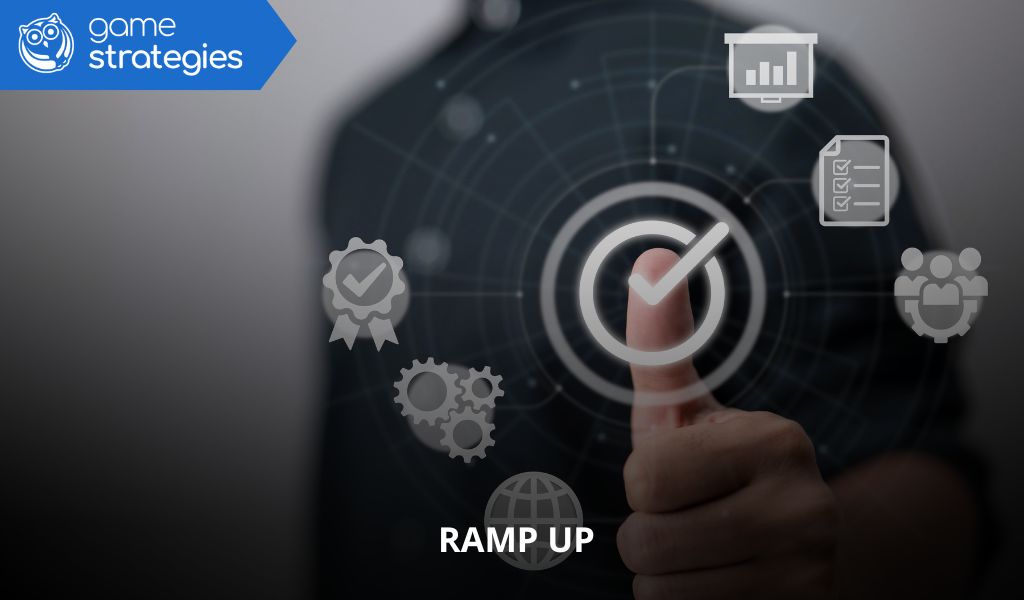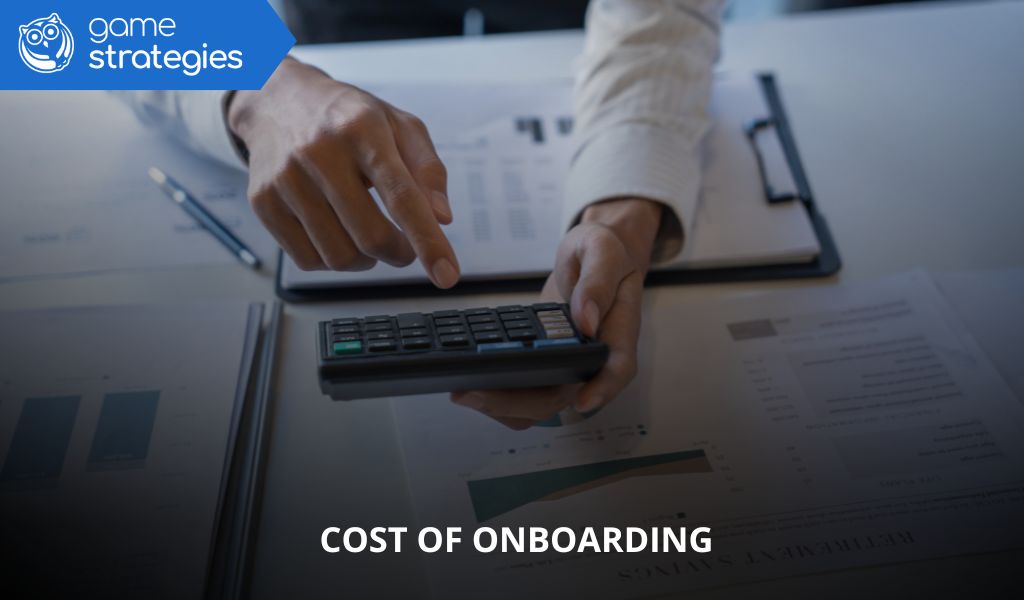Hiring new sales professionals always raises the same question: how long will it take them to reach full productivity? This adaptation and learning period, known as ramp up, can make the difference between a profitable investment or a prolonged cost.
In 2025, leading companies are shortening this period thanks to training simulations, gamification, and artificial intelligence provided by Game Strategies. With a practice-driven approach and real-time monitoring, ramp up can be transformed into an accelerated, motivating learning stage.
Meaning and origin of the concept ramp up
What is ramp up in sales?
Ramp up is the time a new sales team member needs to achieve their optimal productivity. It goes beyond learning a product catalogue: it includes mastering the sales cycle, understanding the market, using internal tools, and adapting to corporate culture.
Factors determining its duration
- Complexity of the product or service.
- Average length of the sales cycle.
- Previous experience of the salesperson.
- Quality of onboarding and initial training.
Techniques for calculating ramp up time
Total quota method: time to reach 100%
Measures how many months it takes a salesperson to fully achieve their monthly sales quota. Effective for shorter sales cycles.
Revenue/productivity method: time to reach 80% of OTE
Focuses on when the salesperson reaches 80% of On Target Earnings (OTE), combining generated revenue with qualitative goals achieved.
Sales cycle + training additives method
This method takes into account the length of the sales cycle plus the time required to master processes and internal tools. Often used in complex B2B sales.
Key variables in designing an effective ramp up plan
Structured onboarding and mentoring
Onboarding should not be limited to presentations and manuals. Structured programmes combine practical training, close mentoring, and clear roadmaps. Reverse mentoring adds value, allowing junior staff to share digital insights with senior colleagues. Guided practice from day one builds confidence and cultural integration faster than traditional onboarding.
Progressive quotas and incentive structures
A common mistake in ramp up management is demanding immediate results. Progressive quotas allow measurable growth without frustration, setting achievable goals that gradually increase in difficulty. A well-designed incentive plan reinforces motivation from the start, rewarding consistency and recognising intermediate milestones.
Progress tracking and continuous adjustment
Ramp up must be seen as a dynamic process. Tracking metrics such as contacts made, meeting quality, opportunities created, and conversion rates enables ongoing adjustments. This ensures alignment between individual development and overall sales goals.
How Game Strategies accelerates ramp up with AI and simulations

Gamified simulators replicating real sales situations
Game Strategies’ simulators recreate realistic business environments where salespeople can practise both technical and soft skills safely. These simulations mimic real client behaviours, helping staff refine negotiation, responses, and confidence.
Dynamic role plays with integrated metrics
AI-driven role plays adapt in real time to each salesperson’s level. Beginners face simpler scenarios with detailed feedback, while advanced staff tackle complex negotiations. Training becomes a personalised path focused on each individual’s development needs.
Visual dashboards for tracking and gamified feedback
Interactive dashboards display real-time progress, including performance metrics, peer comparisons, and achievements unlocked. Visual feedback and gamification maintain motivation, encourage healthy competition, and help managers identify who needs additional support.
Ramp up models adapted to different sales contexts
- Long cycles and complex products: require extended training with hybrid learning and periodic simulations.
- Short cycles or transactional sales: need intensive training in the first weeks to achieve quick autonomy.
- Internal promotions: although employees know the company, they require ramp up focused on new responsibilities and KPIs.
Common mistakes when calculating ramp up and how to avoid them
Unrealistic quotas from the first month
Expecting 100% results too early causes frustration and turnover. Gradual progression is more effective.
Lack of practical training from the start
Relying solely on theory delays productivity. Simulations, role plays, and applied practice from day one speed up learning.
No visible feedback
Without visible progress, motivation drops. Interactive dashboards allow salespeople to track and celebrate their achievements constantly.
Ramp up is not just an adaptation period—it is a strategic investment in sales team productivity. Shortening it requires structured onboarding, gamified simulations, real-time monitoring, and clear metrics.
With Game Strategies, companies can turn weeks of adjustment into days of accelerated learning, maximising ROI in corporate training and strengthening talent retention.
¿De cuánta utilidad te ha parecido este contenido?
¡Haz clic en una estrella para puntuarlo!
Promedio de puntuación 0 / 5. Recuento de votos: 0
Hasta ahora, ¡no hay votos!. Sé el primero en puntuar este contenido.









